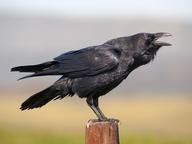
Don't Fall Asleep Alone In the Dark Woods Quiz
Tales of Terror by Edgar Allan Poe
With the Halloween season drawing near, what could be better than revisiting some of Edgar Allan Poe's classic tales of mystery and terror? Ten of his titles are lurking here in this list. Can you pick them out?
A collection quiz
by LadyNym.
Estimated time: 3 mins.